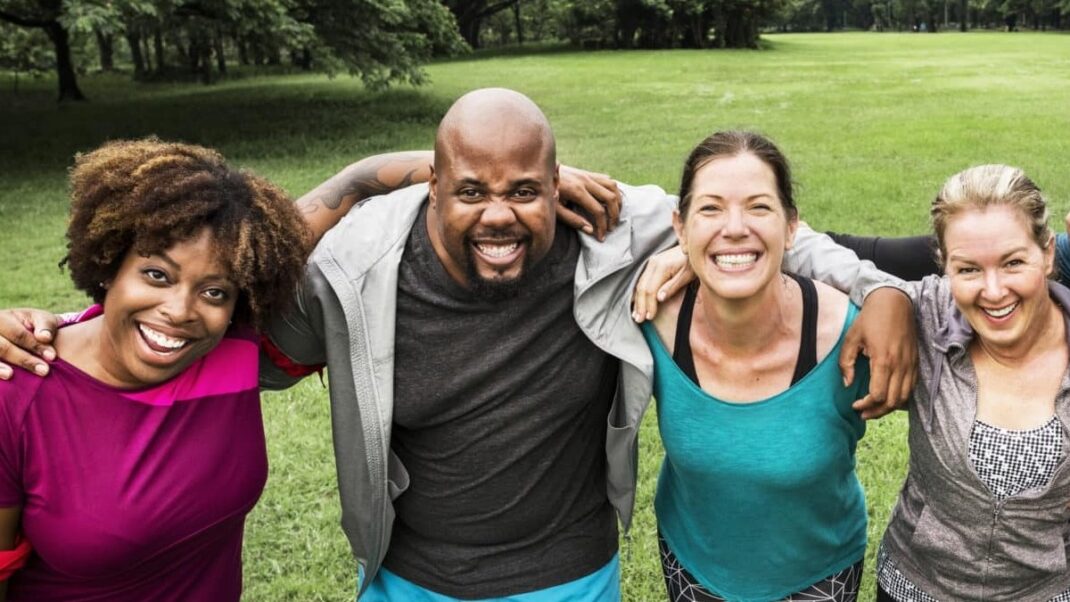6 Ways to Renew Client Commitment
Research findings offer smart ways to motivate exercisers.

Attracting new clients is an ongoing challenge for fitness and wellness professionals. Keeping clients motivated long-term can be even harder. A client might begin training with a strong intention to lose 40 pounds, run a 10K or reverse her prediabetic condition. But the best intentions may not be enough to sustain exercise interest and intensity over time.
Even successful clients are not immune. Clients who have achieved most of their initial fitness goal—for instance, losing 30 pounds out of 40—may quit before the finish line because they feel their progress is good enough or they believe they’ll continue improving without one-on-one help. So what should you do?
Studies in psychology and business suggest several ways to boost client commitment and rev up your training relationships. Here are six smart ways to do it.
1. Use Autonomy-Related Words
Subtle messages clients hear (or see) can increase their exercise motivation. Psychologists use the term priming to describe the way that exposure to emotion-laden words “automatically” influences behavior without a person’s awareness. Clients may not know they are responding to cues, but priming can stimulate emotion and energize behavior.
Words that prime clients’ thinking about autonomy lead people to exercise at higher intensity, for longer periods of time, and to report lower levels of exertion (Banting, Dimmock & Grove 2011). In short, priming makes people exercise harder and feel better about it. And you don’t have to prime clients before they work out. Word cues can amp up motivation during an exercise session.
How you can help. In training sessions, use words that emphasize choice, curiosity, learning and freedom. Build these positive primes into your client-focused marketing, literature and physical surroundings to increase the impact. A poster that encourages clients to “Choose healthy options” or a T-shirt with the slogan “I love a challenge” will reinforce your motivational message.
2. Enhance Exercise-Related Imagery
Studies show that regular exercisers, as well as nonexercisers who intend to exercise, use exercise-related imagery as a motivator (Hall et al. 2010). Appearance-related exercise imagery (e.g., imagining how you look while running) is the most common type. But research shows that this type of imagery can be demotivating. Exercisers who focus on how they look may envision themselves as sweaty, tired and unattractive in workout clothing (Hall et al. 2010). Focusing on appearance highlights extrinsic motives, so people may feel pressured to achieve a culturally desired physical standard to avoid feelings of shame and embarrassment. Extrinsic motives for getting fit tend to be less adaptive than more intrinsic reasons, like being healthy or relieving stress. Energy-related imagery (e.g., imagining how energized, alert and vibrant you will feel during your workout), technique-related imagery (e.g., imagining the correct form for lifting weights, swimming the backstroke or running uphill) and enjoyment-related imagery (e.g., envisioning yourself having fun) are all related to intrinsic motivation (Stanley et al. 2012).
How you can help. Help clients harness the power of imagery that cultivates intrinsic motives. Use imagery throughout a client’s session or tailor it to a client’s specific needs. During preworkout stretching moves, ask clients to imagine an invigorated version of themselves, glowing in anticipation of their workout. Imagery can enhance general motivation and get clients psyched up (Munroe et al. 2000). Before each set, demonstrate proper form, and then ask the client you’re with to envision himself executing the movement correctly. Visualizing specific skills can enhance confidence and competence (Munroe et al. 2000). During cool-down periods, have clients reflect on high points from their sessions, and encourage people to picture their bodies growing stronger, healthier and more resilient.
3. Focus on Remaining Goals
No doubt you sometimes demonstrate how far clients have come by reminding them of their achievements. After all, clients come to trainers to get results. But studies suggest that focusing on past achievements can undermine motivation (Koo & Fishbach 2008). If successful clients feel they’ve accomplished enough, they might scale back their efforts and shift their attention to other personal goals.
Whether you ought to focus on past progress or on goals yet to be attained depends on a client’s level of motivation, according to Ayelet Fishbach, PhD, professor of behavioral science and marketing at the University of Chicago. When it comes to motivation, says Fishbach, people ask themselves two questions: (1) “Is the goal worth pursuing?” and (2) “Is my progress adequate?”
Research shows that past efforts energize people with low levels of commitment. Noting that they have already lost 7 pounds or have consistently attended classes and workouts causes reluctant exercisers to infer that their fitness goals must be worthwhile, because they have invested a great deal of time and energy at the gym. Important goals deserve additional effort, they conclude.
By contrast, clients who are highly committed to their goals are invigorated by the gap between their current achievements and their aspirations. The desire to run that next half-marathon without walking or to shed those last 5 pounds keeps them engaged.
How you can help. Take your client’s current level of motivation into account and frame goal-related conversations accordingly. Highly motivated clients can increase their performance by pursuing progressively more challenging goals when the current level has been successfully mastered (Koo & Fishbach 2010). Clients may need your professional help to define next-level goals.
4. Offer Options Wisely
Choices can increase or decrease motivation, depending on how well they meet an individual’s psychological needs (Katz & Assor 2006). Novice exercisers may be overwhelmed by complex choices (e.g., whether it’s better to use free weights or machines) but eager to select exercise options they find interesting or challenging (e.g., choosing between a stair climber or an elliptical machine). More experienced exercisers may enjoy selecting specific exercises that address their fitness goals (e.g., choosing interval training for stamina or hill-running to build leg muscle).
One example of a choice clients should make (but often don’t) is their exercise intensity. You might expect clients to opt for easy workouts, but research shows that self-selected pace usually falls within American College of Sports Medicine standards. In a laboratory study, sedentary participants reported lower levels of interest, enjoyment and energy when the experimenter controlled treadmill speed, even though the pace was precisely matched to each subject’s self-selected speed in an earlier session (Vazou-Ekkekakis & Ekkekakis 2009). Clients get a motivation boost from feelings of autonomy, and they may opt out if trainers push them too hard.
How you can help. Tailor options to match ability and motivation, so clients feel a sense of ownership and engagement. Encourage higher-intensity exercise by asking, “How fast do you think you can run for 30 seconds?” or by offering an appropriate target—such as “I think you could run 7.5 miles per hour for 30 seconds—and then letting the client set the speed. If a client chooses a too-easy intensity, let it go. Ask her to rate her level of effort on a 10-point scale, and point out, “That looked easy for you!” Then ask, “How much faster (or steeper) could you go?” Coach clients to reach for more challenging targets, without forcing the issue. Setting high goals and trying to beat one’s personal best are self-motivational tools.
5. Get Social
You may worry that if you recommend group workouts, clients will miss out on one-on-one training time or your overall fee will be lower for a group session than for the solo sessions combined. But moving clients into a social setting for workouts can be a boon to motivation. Being in a group with others who share similar goals and understand one’s experiences with exercise contributes to a sense of relatedness, according to Philip M. Wilson, PhD, associate professor of kinesiology at Brock University in St. Catharines, Ontario. That sense, in turn, has been associated with optimal motivation and well-being (Wilson & Garcia Bengoechea 2010).
Group exercise can trigger extrinsic motivations to exercise: people often feel social pressure to show up, or they may increase their level of effort to match (or out-do) other group members. Although these cues are extrinsic, they can be adaptive. Seeing others’ success can help clients envision their own future achievement and adjust their own goals upward.
How you can help. Use workout groups to expose clients to more advanced role models who have already achieved some of their same aspirations. Inspiring examples may prompt clients to internalize healthy beliefs about fitness, such as “Exercise is fun,” “Physical activity is interesting” and “Being active is important for my health,” says Wilson.
6. Ask for Testimonials and Referrals
Do you avoid asking for client endorsements because you don’t want to seem too intrusive or pushy? If so, you may be missing out on a motivational tool (not to mention a marketing advantage). Saying good things about a club, trainer or program may enhance a client’s motivation to continue the relationship, since it is a link between commitment and consistency (or adherence).
“Once a stand is taken, there is a natural tendency to behave in ways that are stubbornly consistent with that stand,” according to social influence expert Robert Cialdini, PhD, professor emeritus of psychology and marketing at Arizona State University (Cialdini 2007). People often infer their own attitudes from their behavior, so clients who make positive statements about a fitness or wellness professional may be convinced by their own comments—and become increasingly committed to the partnership.
How you can help. Don’t be afraid to ask clients for endorsements. Research by Polish psychologists shows that requests made in the context of casual conversation are most likely to be effective (Dolinski, Nawrat & Rudak 2001). Mention your new website or upcoming boot camp, and then ask if your client would be willing to write a brief statement of what he’s gained from working with you. Giving testimonials reminds clients of the benefit they get from exercise so they want to keep doing it.
Use these autonomy-related words and phrases with clients to boost their workout intensity and enjoyment:
- You have several choices.
- This should be challenging for you.
- Which exercise do you want to learn first?
- I’m curious about how you are feeling.
- These options could be combined in many ways.
- Are you willing to give it a try?
- It looks like you’ve mastered that exercise.
- Did you enjoy your vacation?
- Which is most interesting?
- What did you decide about the running group?
References
Heidi Smith Luedtke, PhD
Heidi Smith Luedtke, PhD, is a personality psychologist and former business development consultant who has coached many clients to achieve their personal goals. She writes about health, business, personal growth and people skills.





